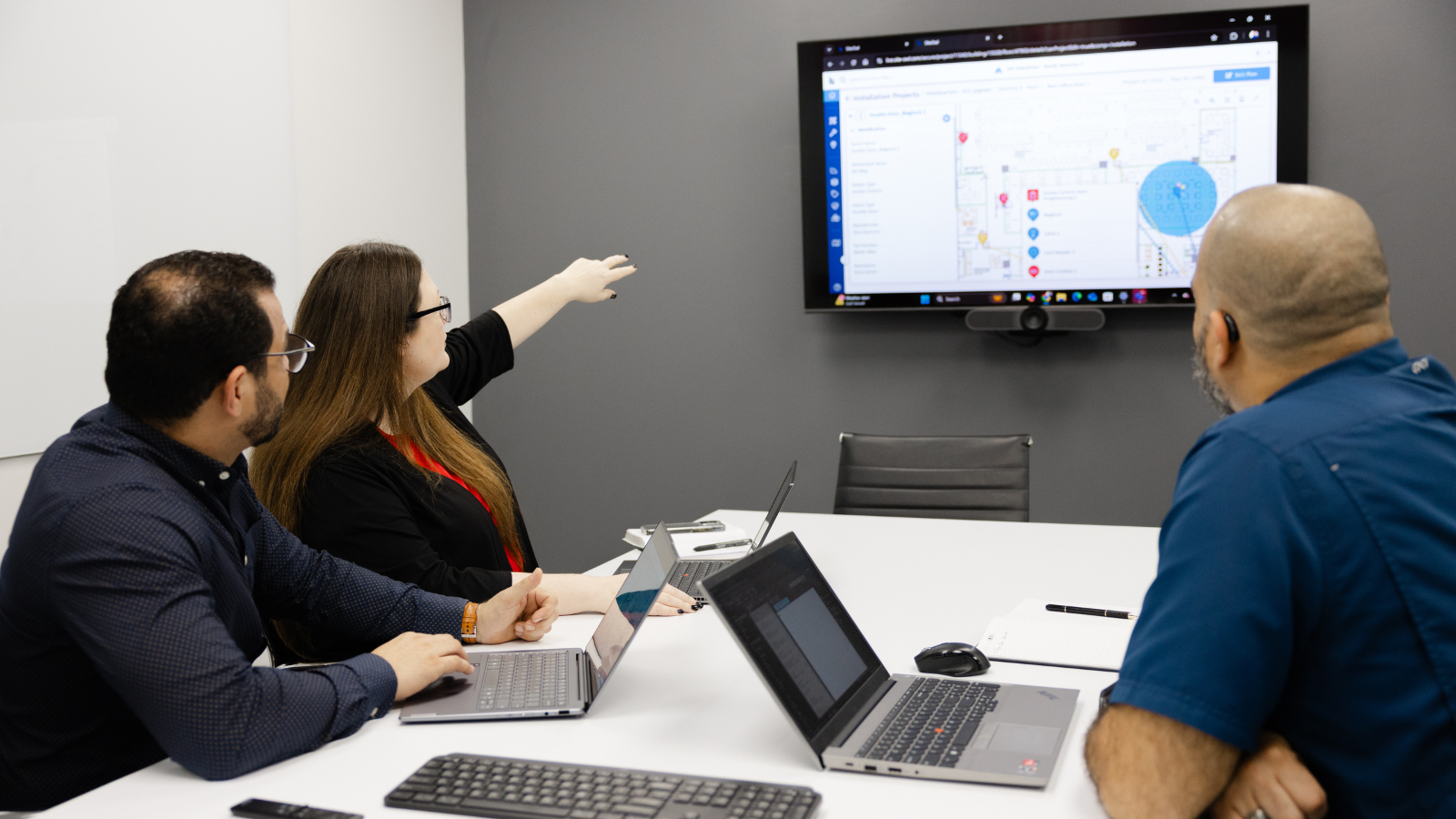Since its launch in 2001, CTPAT has transformed supply chain security, with over 11,400 certified partners committed to protecting global trade. But in today’s rapidly changing threat landscape, simply being a member isn’t enough.
To truly safeguard your supply chain, you must proactively strengthen your security posture and stay ahead of emerging risks.
In our previous article, CTPAT membership simplified, we broke down the basics of joining the program. Now, we’re diving deeper to help you ace your next audit
Let’s get started!
CTPAT: A strategic alliance for secure trade
CTPAT is an initiative by U.S. Customs and Border Protection designed to enhance the security of private companies’ supply chains against terrorism.
By fostering a collaborative environment between the private sector and trade communities, CTPAT has set new standards for securing cargo and preventing terrorist activities.
How does CTPAT accomplish its mission?
CTPAT encourages companies to adopt robust security measures alongside U.S. Customs and Border Protection (CBP). Key areas include:
- Physical security: Fencing, access controls, and surveillance systems protect facilities and cargo.
- Container and conveyance security: Seals, inspections, and tracking prevent unauthorized access to shipments.
- Procedural Security: Accurate documentation, manifests, and secure data handling reduces vulnerabilities.
- Personnel Security: Background checks and security training ensure trustworthy staff.
- Cybersecurity: Robust defenses protect information systems critical to supply chain operations.
But CTPAT is not a static program. Its standards constantly evolve to combat emerging threats and technologies used by criminal organizations. By joining CTPAT, businesses protect their supply chains and become active partners in global security.
Why CTPAT certification is a smart security move
For Security Directors navigating the complexity of global logistics, CTPAT certification is a strategic imperative. With ongoing security concerns, CTPAT helps companies ensure supply chain integrity.
CTPAT goes beyond checklists; it’s the key to boosting your organization’s security and efficiency. Here’s why getting certified is the smart move:
- Mitigate risk: CTPAT’s rigorous standards protect your operations from threats, safeguarding your reputation and bottom line.
- Streamline border crossings:Certified companies often enjoy faster customs processing, reducing delays and costs.
- Gain competitive advantage:CTPAT certification signals your commitment to security, setting you apart from the competition
Joining CTPAT strengthens your business and fosters a security-focused mindset. But certification isn’t the finish line – regular audits ensure you maintain those high standards.
What does a CTPAT audit involve?
A CTPAT audit is a thorough risk-based assessment of your current supply chain security. It’s designed to zero in on how robust your supply chain’s defenses are, ensuring you’re meeting those CTPAT standards.
The audit examines the key aspects of supply chain security. Beyond compliance, it serves as a strategic tool to enhance supply chain resilience, making operations more secure and efficient.
Before an audit, here are some key questions you should consider:
- Essential security measures: Are your valuable goods protected with strong physical security measures?
- Container integrity: Are your containers secure against tampering or unauthorized access?
- On-site security: How strong is your facility’s physical security (fences, access control, etc.)?
- Operational Protocols: Do you have a well-defined security playbook?
Download the CTPAT 17-Point Inspection Checklist Sample
A CTPAT audit isn’t just about compliance – it’s a valuable opportunity to uncover hidden vulnerabilities and strengthen your supply chain’s resilience. SiteOwl’s data-driven platform simplifies the process, pinpointing vulnerabilities and streamlining your path to unparalleled supply chain security.
Checklist to Ace Your Next CTPAT Audit!
| CTPAT Audit | How SiteOwl Streamlines the Process | |
|---|---|---|
Pre-Audit Preparation |
||
| Review and Update: Thoroughly analyze your current security profile and all relevant documentation. Ensure everything aligns with the latest CTPAT Minimum Security Criteria. | Centralized documentation repository ensures easy access to the latest security policies and procedures. | |
| Close the Gaps: Proactively identify any weak spots in your security practices and take corrective action before the audit. | Automated compliance mapping with CTPAT Minimum Security Criteria pinpoints gaps. | |
| Train Your Team: Ensure all employees involved in supply chain operations understand CTPAT requirements and their role in maintaining compliance. | Customizable training modules tailored to CTPAT requirements. | |
| Knowledge base and audit preparedness resources accessible 24/7 | ||
During the Audit |
||
|
||
Post CTPAT audit: The security journey continues
Achieving CTPAT certification is a major accomplishment – but for savvy security leaders, it’s the start of the journey, not the end. The real value of CTPAT lies in continuously improving and evolving your security practices to stay ahead of the curve.
So, how do you continuously advance your security practices after obtaining CTPAT certification? Just remember DDI. Documentation, Diligence, and Innovation.
To get the most out of your certification, focus on:
- Documentation: Maintain detailed records of your security protocols, procedures, and updates. Complete visibility into your physical security systems is key.
- Diligence: Conduct regular security audits, stay informed on new threats, and actively participate in the CTPAT community.
- Innovation: Embrace technology, data analytics, and cutting-edge security measures. Foster an adaptable and proactive security-conscious culture.
Making DDI effortless and effective
Documentation, Diligence, and Innovation (DDI) are essential for keeping your CTPAT certification. But turning theory into practice can be a challenge. The right tools make all the difference.
SiteOwl transforms DDI from theory to practice, making the management of your CTPAT compliance empowering you to:
- Master documentation: Centralize all physical security details – configurations, updates, policies – in a user-friendly platform. No more scattered files or missed deadlines.
- Be Proactive: Real-time monitoring and alerts keep you ahead of threats. Audits become a breeze, letting you fix issues quickly and confidently.
- Innovate with confidence: SiteOwl’s tech and analytics help you stay ahead of evolving threats, and data-driven insights guide your security strategy.
Leveraging SiteOwl for seamless CTPAT compliance
With the right approach, DDI becomes a powerful framework for maintaining a robust security posture post-CTPAT certification. By investing in tools that prioritize streamlined documentation, proactive risk assessment, and data-driven innovation, you’ll transform your security practices from reactive to future-proofed.
SiteOwl empowers security teams with the tools they need to manage documentation accurately, conduct thorough due diligence, and harness data for proactive supply chain security.
Stay ahead of security challenges and optimize your CTPAT audits with SiteOwl. Discover how our platform transforms your approach to supply chain security – visit our website or request a demo today!

Su Subburaj
Su is SiteOwl's CMO and leads all marketing and communications. Su has extensive strategy and management consulting experience and previously consulted for 3Sixty Integrated where she gained an in-depth understanding of digital transformation challenges in the physical security industry. When not working on strategies to expand SiteOwl's footprint, Su enjoys bad karaoke, weightlifting and traveling.




